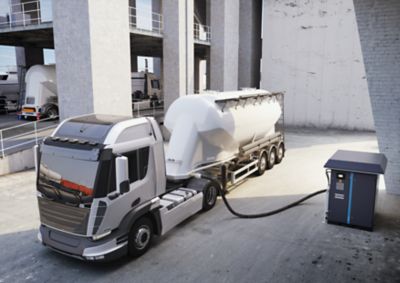19 June, 2025
From straining your pasta to preparing your coffee, filtration is everywhere in our daily lives.
But did you know that many everyday products also undergo multiple stages of filtration during their production?
In this article, you will discover the fundamental types of filtration techniques, how they work, and where they are used in process filtration.
What is process filtration?
Process filtration is used to remove particles, contaminants, or other unwanted substances from liquids or gases as part of the production process. It helps separate solids from liquids or vapors from gas streams and ensures the final product meets quality and safety standards. This step is essential in industries like food and beverage, pharmaceuticals, cosmetics, animal nutrition, chemicals, and microelectronics. In these sectors, filtration helps maintain consistency, meet regulatory requirements, and extend product shelf life.
What are the different types of filtration techniques?
We can distinguish four fundamental filtration methods, typically defined by how the particles are retained and the nature of the filter media.
Cake filtration
When a high number of particles are trapped by the filter medium, they form a particle bed. Once this filter cake is created, it becomes the primary filter medium and is crucial to achieving effective filtration. Common filter aids like diatomaceous earth or activated carbon are added to form this filter cake. In the food & beverage industry, this principle is usually applied to clarify highly colloidal liquids such as beer, wine, and juices. This type of filtration is also used in areas like edible oil or sugar refining, where heavy solids need to be removed efficiently.
Depth filtration
Depth filtration catches particles over the whole depth of the filter media, not only at the surface. The filter typically consists of fibrous, granular, or sintered materials that are pressed, wound, or otherwise bonded into a maze of flow channels. Together, the fibers form irregular channels, resulting in a tortuous path for the particles. Due to different retention mechanisms, depth filters are capable of catching particles much smaller than the channel diameter within the whole depth of the filter matrix. For instance, a sterile grade depth filter for air has an average pore size of 8 µm but is capable of retaining bacteria of 0.22 µm with a sterile-grade efficiency.
Depth filters are widely applied in process filtration, for example, to remove colors, recover catalysts, or separate undissolved particles. Furthermore, thanks to their large dirt-holding capacity, they are often used as prefiltration steps to protect finer membrane filters in sterile applications or reverse osmosis. This type of filtration is also found in pharma applications or enzyme processes where solids are high and final clarity is important.
Surface filtration
Straining is the most recognizable type of filtration that uses a sieving effect, also called size exclusion. Particles larger than the openings in the filter mesh will be captured at the surface, while the smaller particles pass through. This is why it is also called surface filtration. In everyday cooking, we strain pasta by using a colander to drain the water. In process filtration, membrane filters with small pores are a good example since they can retain bacteria on the surface. They are often applied as the final filtration step to make the liquid sterile grade. This makes it especially useful in industries like cosmetics, water bottling, and pharmaceuticals where clarity and microbiological safety are essential.
Crossflow filtration
In crossflow filtration, the fluid does not flow through the filter media (“dead-end filtration”), but alongside the filter medium surface (“crossflow filtration”). A common example of crossflow filtration is reversed osmosis. Only water molecules pass through the membrane which effectively blocks and removes other particles such as salts, chemicals, and microorganisms.
The effluent is purified water. Crossflow filtration is widely applied in dairy ultrafiltration (e.g., whey protein separation), biopharma applications, and high-volume water purification processes where continuous operation and minimal clogging are essential.
How are the different filtration types applied across industries?
- Cake filtration is often applied in winemaking, juice clarification, and other tasks involving high solid content.
- Depth filtration supports steps like prefiltration, pigment removal, or catalyst recovery.
- Surface filtration plays a key role in bottled water, cosmetics, and sterile drug processing.
- Crossflow filtration is suited to biotech, dairy production, and water treatment, where steady flow is important.
Partner with Atlas Copco for your filtration needs
Each method brings a different advantage, whether it’s about removing particles, clarifying liquids, or helping create sterile fluids. Knowing how they work helps match the right solution to the right process.
At Atlas Copco, we work with a wide range of industries to deliver trusted process filtration solutions. If you’re looking for the right setup for your application, our experts are here to help. Explore our complete portfolio to find the best fit for your process.
FAQ: Understanding different types of filtration
Here are a few common questions we hear about filtration methods, useful if you're comparing options or refining your process.
- What is the difference between surface filtration and depth filtration?
In surface filtration, the contaminants are retained on the surface of the filter, like membranes. With depth filtration,
the particles are collected over the complete depth of the filter, for example, in melt-blown polypropylene filters.
- What is the difference between dead-end filtration and cross-flow filtration?
In dead-end filtration (also called direct filtration or closed-end filtration), the fluid passes through the filter media,
while for cross-flow filtration (also called tangential filtration), the fluid is circulated alongside the filter. The latter is typically applied for very dense filter media such as those in reverse osmosis.
- What is the difference between an absolute-rated filter and a nominal-rated filter?
An absolute rated filter is capable of removing all particles above a specified size (typical retention rate: 99.98 %).
A nominal rated filter is capable of removing a certain number of particles, but not all particles (typical retention rate: 98 %).
The absolute or nominal size is always specified for a certain contamination size. In other words, a filter element that has an absolute rated filtration efficiency at 5 µm might be nominal rated at 1 µm.


